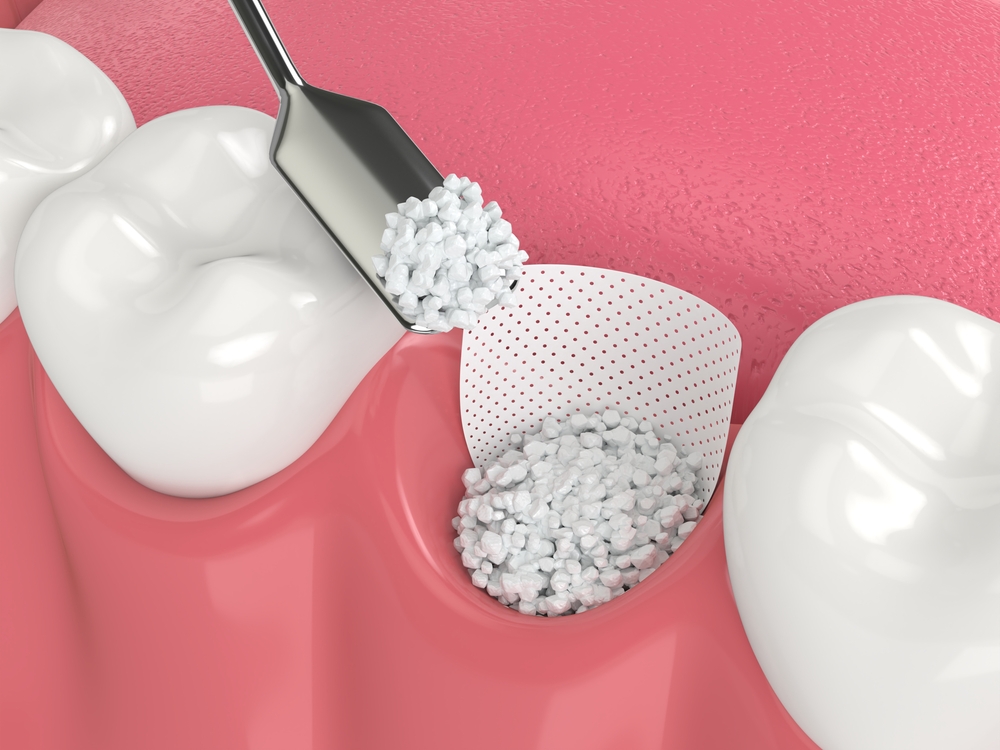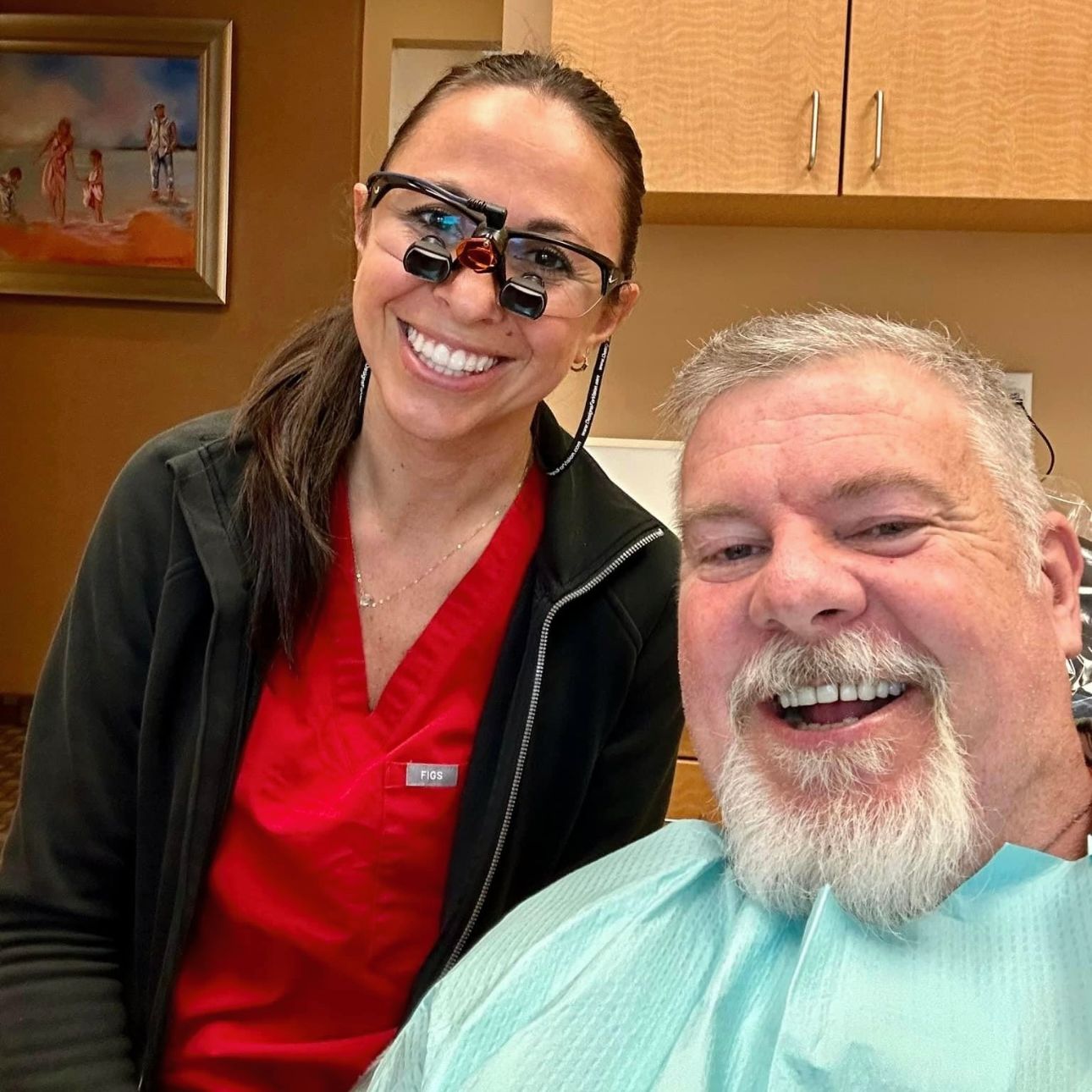
Is It Possible to Regrow Bone? Yes!
In fact it’s vital to replace missing bone tissue in your upper and lower jaw that’s commonly caused by periodontal disease, injury or congenital conditions.
Dr. Aldredge performs bone graft surgery to help regenerate and regrow eroded bone, so you can chew food, prevent more teeth from falling out, even avoid changes in your facial structure
What is a Bone Graft?
A bone graft is supplemental bone material that is placed in the jaw where existing bone has been lost. The graft material meshes with the bone around it, creating support for bone tissue to grow and fill the empty spaces.
There are several types of bone graft material: autograft, meaning it comes from the patient; allograft, which is purchased from a human bone bank, or alloplast, made of synthetic product. Dr. Aldredge vastly prefers using the patient’s own bone, an autograft.
Who Needs a Bone Graft?
People who have missing teeth or teeth in danger of falling out should have a bone graft. Here’s why:
Every tooth needs to be supported by the jaw bone or it will fall out. At the same time, the jaw bone is dependent on teeth to maintain the ability to support them.
For healthy bone to thrive, it needs to be stimulated by actions such as chewing. When upper and lower teeth make contact, pressure on the roots signals the bone to periodically renew itself. When there is no tooth and no root, the bone is not stimulated to regenerate and instead dissolves. This impacts the strength of the jaw and integrity of neighboring teeth, which will shift out of alignment.
Bone grafts can be used to save individual teeth, or to create a foundation for dental implants.
Bone Graft to Save Individual Teeth
When periodontal disease causes the loss of bone holding a tooth in place, that tooth will become loose or may twist in a different direction. The good news is it may still be possible to save the unstable tooth. There is nothing that makes Dr. Aldredge happier. He can place bone graft material into the periodontal pocket immediately surrounding the tooth. Once the graft integrates with the remaining bone and helps it regenerate, the tooth is once again fully secured and functional.
Bone Graft for Dental implants
When a tooth has been lost to periodontal disease or has been extracted, it is essential to replace it with a dental implant or risk losing bone in the jaw.
There are three types of bone graft surgery Dr. Aldredge performs in preparation for dental implants: Ridge Preservation, Ridge Augmentation and Sinus Lift.
Ridge Preservation (Tooth Socket Bone Grafting)
The alveolar ridge is the area of the jaw bone that houses the roots. A ridge preservation graft is placed immediately after a tooth extraction. Graft material is added directly into the empty tooth socket, preserving the shape and structure and preparing the site to receive a dental implant. The graft is covered with a protective membrane and the gum is sutured closed over it. Once the bone integrates with the graft it is strong enough to support an implant or prosthetic.
Without the prompt placement of bone material the socket will collapse in on itself. The ridge will break down and be reabsorbed into the body, much the way an unused muscle atrophies.
Ridge Augmentation
If the jaw already has significant bone loss, a ridge augmentation graft can help restore the shape and size of the bone so it can securely accommodate implants. Bone loss to this extent involves a larger area of the alveolar ridge and will need a larger graft. As with ridge preservation, the graft will be protected by a membrane and gums while fuses with the present bone.
Sinus Lift Surgery
Similar to ridge augmentation surgery, sinus lift surgery is specifically for increasing bone density in the upper back jaw under the sinuses. Where there is insufficient bone for supporting implants, Dr. Aldredge will surgically raise the sinus floor up, creating space for a bone graft and new bone growth that wasn’t previously there
S.M.A.R.T. Bone Grafting
We also offer an alternative, minimally invasive bone grafting procedure called S.M.A.R.T. bone grafting, performed with specialized instruments and no cutting. Learn more here.
Regrowing Bone in the Jaw
Periodontal disease, along with injury or a congenital condition, can cause bone loss in the jaw. It is vital to replace and regrow bone tissue to avoid further erosion which will lead to more tooth loss and significant deformation of the facial structure.
Regenerating bone to save individual teeth
When periodontal disease causes the loss of bone holding a tooth in place, that tooth will become loose or may twist in a different direction. The good news is it may still be possible to save that tooth. There is nothing that makes Dr. Aldredge happier. He can place a bone graft into the periodontal pocket surrounding the tooth. Once the new bone integrates with the remaining bone, the tooth is once again fully secured and functional.



